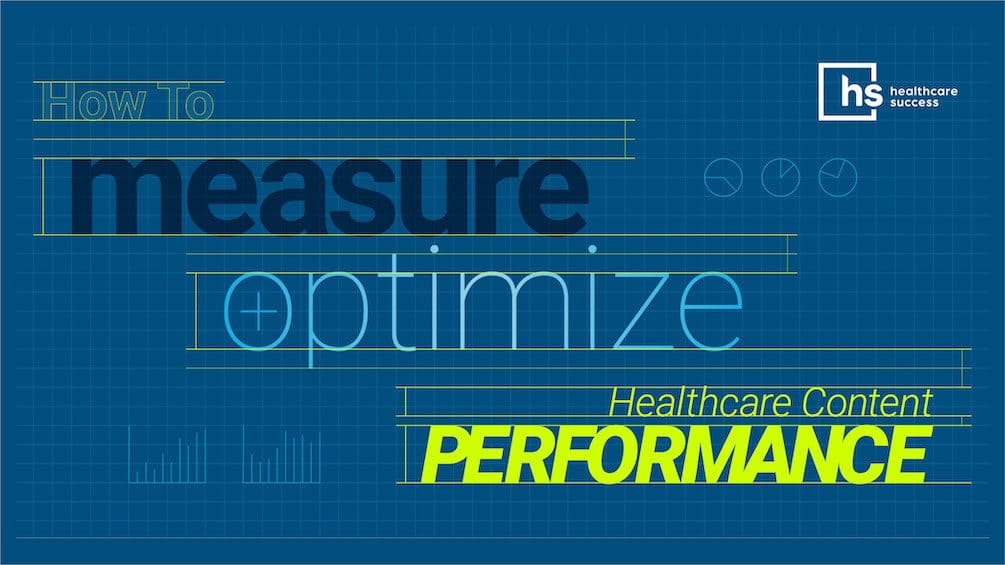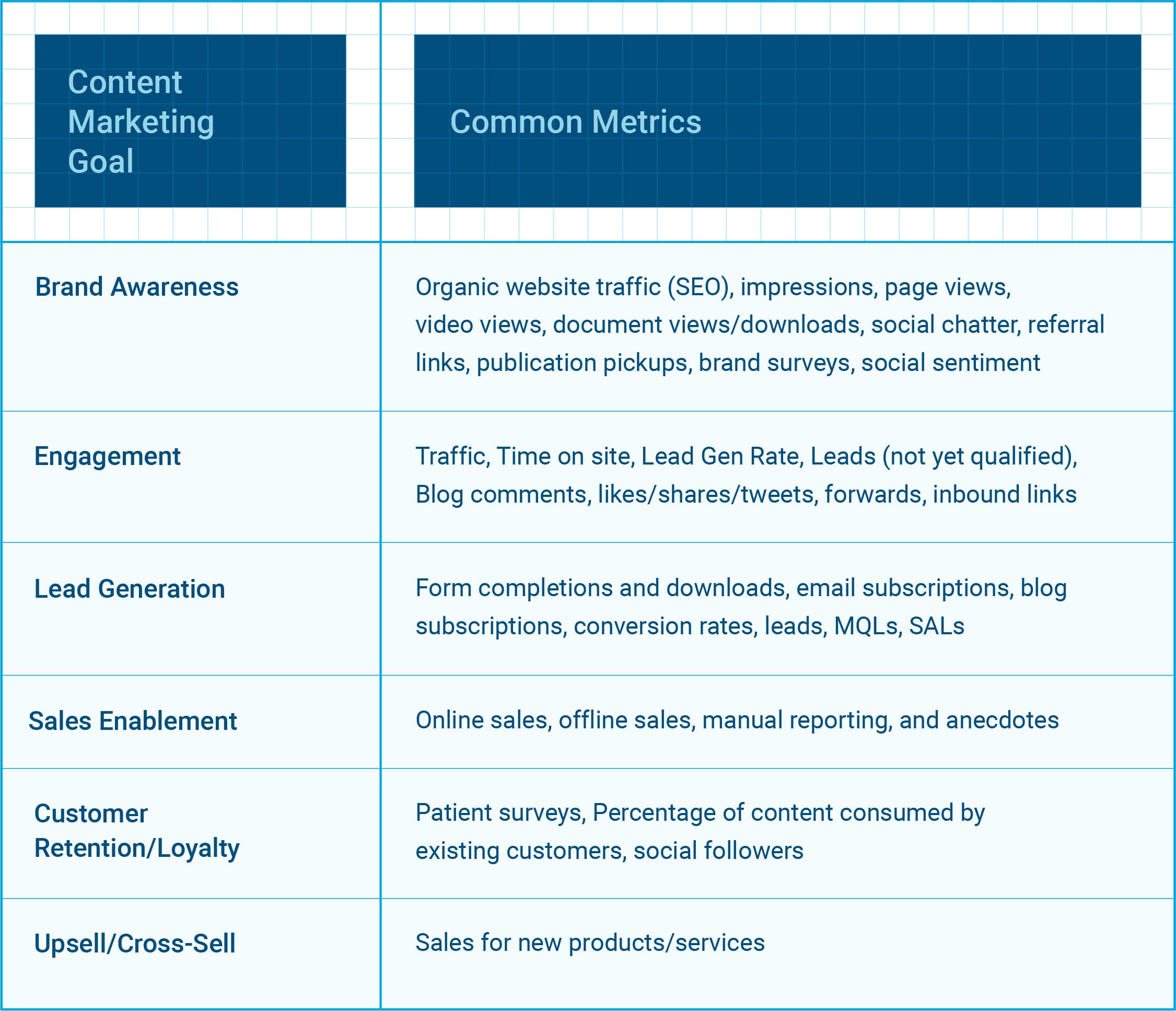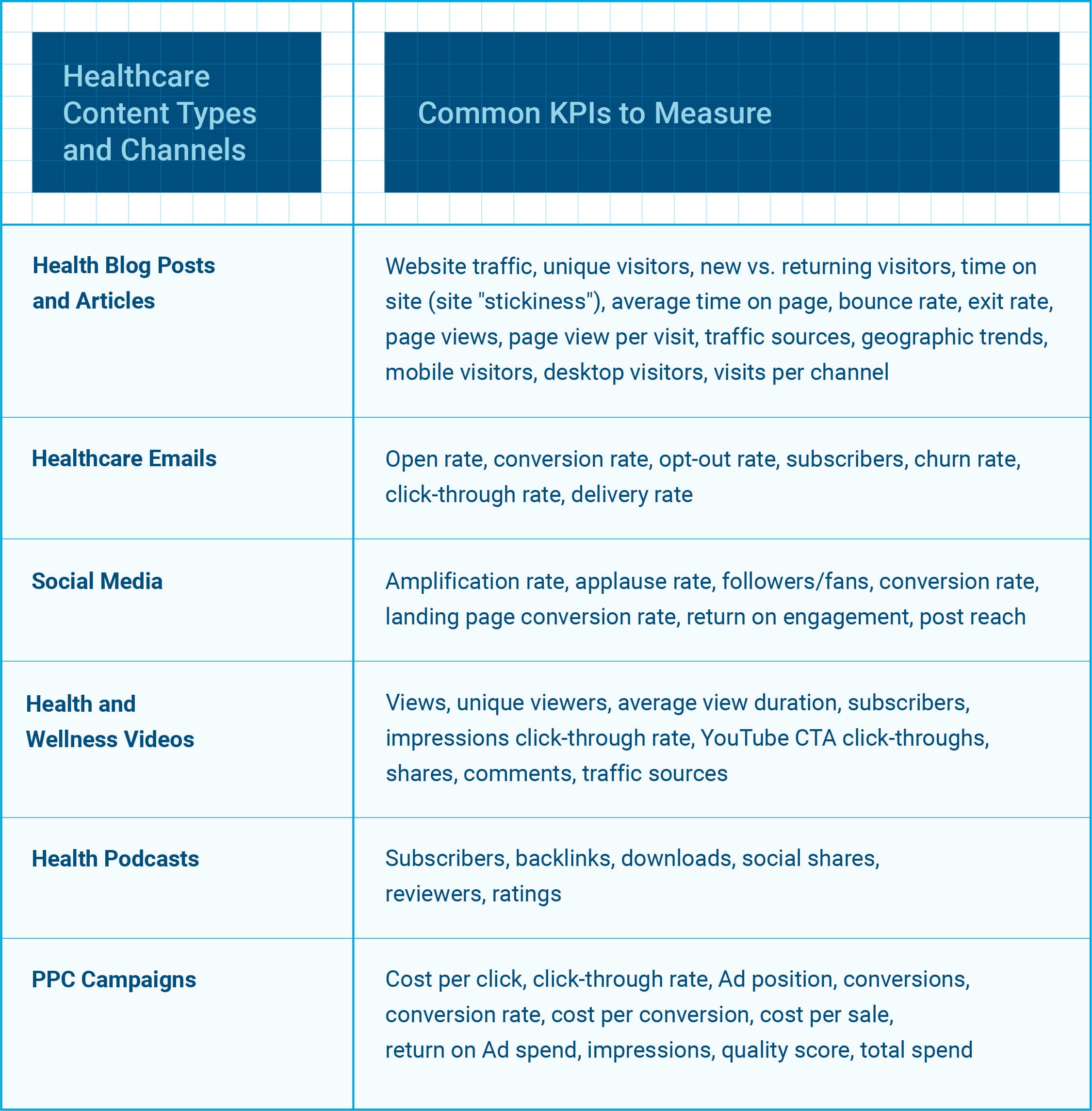How to Measure and Optimize Healthcare Content Performance
As a leader of a healthcare organization, you’re focused on achieving your business goals.
So how does content fit in? Ideally, it should support your primary goals.
Today’s best content marketing is aligned with business goals and drives profitable action. What’s more, marketing teams can demonstrate how content contributes to business goals.
If the business value of your content is not clear, you’re not alone.
Content is notoriously difficult to defend, let alone to measure and prove ROI.
But it doesn’t have to be this way.
By selecting and tracking the right metrics, you can find out if your time, budget, and resources are moving the needle.
In this guide, we provide five steps on how to measure content performance. Our guide also includes tips on how to pick the right metrics by the content goal and content type.
5 Steps to Measure and Optimize Healthcare Content
- Select your content goals
- Pick the metrics that support your content goals
- Track your KPIs based on the content type
- Measure your performance
- Turn data into wisdom
1) Select Your Content Goals
What do you want your content to achieve? There are many different goals for content, but here are just some of the most common ones that might apply to the healthcare industry.
Brand awareness: Brand awareness, or the degree of consumer recognition of the product or service by its name, is a crucial step if your goal is to promote a new product/service or revive an older brand. It falls into the “awareness” stage of the customer journey.
Engagement: Engagement falls into the “consideration” stage of the customer journey. In this stage, the content you create should be helping people consider your services as an option to resolve their pain points.
If your goal is to improve engagement, you’ll want to produce content designed to generate meaningful interactions over time. This means creating ways to better engage with new and returning patients and potentially nurture them and their caregivers throughout the entire experience.
Lead Generation: Content is a crucial part of lead generation, and there are many effective ways to generate leads with healthcare content marketing.
Lead generation falls under the decision-making stage of the customer journey and represents conversions, including leads, MQLs, and SQLs.
Here’s a breakdown of each:
Leads: A lead is contact information about a potential customer or patient.
Marketing qualified lead (MQL): A step above a lead is an MQL, someone who has shown a deeper level of interest in becoming a customer. On a website, a marketing qualified lead might have downloaded a guide.
However, your team should define the type of marketing content that a person should be engaged with to qualify as an MQL.
Sales qualified lead (SQL): When the marketing team and sales team agree that the MQL can be converted into a customer, the MQL turns into a SQL.
Sales Enablement: If your goal is to provide salespeople with engaging assets that their targets would find compelling and help shorten the sales cycle, ultimately, you need to give the sales resources the customer wants. Beyond supporting sales from website visitors, physician liaisons or sales reps can also use online content in their sales process when interacting with prospects.
Customer Retention/Loyalty: Building customer loyalty in the health industry is about creating a content strategy that anticipates customer needs and encourages repeat business and referrals. However, rules and regulations around incentives make balancing between rewarding patients and remaining compliant tricky.
Upsell/Cross-sell: If your goal is to promote a complimentary, additional, or better product or service, the key is to keep your customer's needs and wants in mind and align your offer with the underlying conditions that drew the customer or patient to the original service. Metrics can help you track the stage in the purchasing process to suggest an upsell or cross-sell.
2) Pick the Metrics that Support Your Content Goals
Now that we've identified and prioritized your goals, what are the typical metrics used to help measure and track the programs' success?
Here are some examples:
3) Track Your KPIs Based on Content Type
With standard metrics for your specific marketing goals, you can now track your KPIs.
Where you find the data or KPI depends on the healthcare content type and the data you want to measure.
The following are the most common KPIs by healthcare content type:
4) Measure Your Performance
As I’ve illustrated above, there are many ways to measure your content marketing efforts.
Here are a few tips on how to measure your performance:
- Establish regular reporting. Whether you start monthly or weekly, you need to set up regular reporting so that you can regularly see the data and share it with your team. Always make sure to have your main goals represented during reporting.
- Schedule regular meetings. With performance data gathered regularly, you’ll need to schedule meetings with team members and stakeholders to help them stay on top of content performance.
- Point out the weaknesses. Mistakes, failures, and struggles are common in content marketing. Identifying those weaknesses is crucial to coming up with solutions and better strategies.
5) Turn Data Into Wisdom
Metrics offer insight into what’s working and what’s not working. But the steps you take after the reporting are what can make or break your content marketing efforts.
Decide on how to use the data to optimize your content performance. This requires experimenting and testing.
For example, a significant aspect of SEO includes regularly reporting on website traffic metrics to identify top pages by traffic. While it might be tempting to report on the top pages as a win, there’s more to do here. Top pages by traffic are great examples of content you can optimize. First, make sure that the page features high-quality content and improve or optimize the content if necessary. Knowing that they bring in traffic, those pages can also be enhanced by adding links to pages that convert, known as conversion champions.
Testing is also a significant way to turn data into wisdom. Be sure to test your content and refine along the way to prove the messages resonate. One example is A/B test your email marketing subject lines, header images, or send times to see which received a higher open rate.
The Never-Ending Job of Healthcare Content Marketing
Remember, content marketing is constantly evolving. It’s essential to stay consistent and continue learning about what’s working and what’s not working.
By selecting the right content goals and learning how to measure performance, you can begin to see how content fits together and make better choices for your healthcare organization.
Related Articles:
How to Choose the Right Healthcare Content Types for Your Marketing Message
How to Produce Content More Efficiently (Our Best Tips)
6 Ways to Tell If Your Marketing Delivers Results











